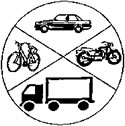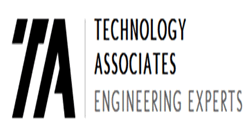 Motor vehicle accidents are the most common type of incidents producing injury in the US. The main issues in litigating automotive accidents involve vehicle speeds, seatbelt usage, airbag deployment, vehicle component failure (e.g. steering, braking), roadway design, occupant biomechanics, rollover, visibility, etc. Technology Associates has expertise in a great variety of accident types including, single car crashes, multiple car crashes, front impacts, side impacts, highway or arterial road accidents, tree and guardrail impacts and others.
Motor vehicle accidents are the most common type of incidents producing injury in the US. The main issues in litigating automotive accidents involve vehicle speeds, seatbelt usage, airbag deployment, vehicle component failure (e.g. steering, braking), roadway design, occupant biomechanics, rollover, visibility, etc. Technology Associates has expertise in a great variety of accident types including, single car crashes, multiple car crashes, front impacts, side impacts, highway or arterial road accidents, tree and guardrail impacts and others.
Expertise
At Technology Associates our testing, research and analysis capabilities include:
- Tire skid testing and slip angle analysis
- Crush energy calculations
- Momentum and energy calculations
- Human factors
- Computer simulation & animation
- An extensive auto reference library
Questions Answered
Through scientific analysis, we can help you answer pertinent questions such as:
- How fast were the vehicles moving?
- What was the driver able to see?
- Should the airbag have deployed?
- Can skid length be determined from accident scene photos?
- Were weather, poor illumination or road hazards contributing factors?
Case Examples
Two Vehicle Collision:
As a sedan was making a left turn into a driveway from a two-lane road, it was broad sided by an oncoming van, injuring the car's driver. Technology Associates performed a complete accident reconstruction and found that the initial speed of the van was at least 10 mph over the posted speed limit. We successfully demonstrated to a jury that although the Honda had turned in front of the van, the van's excessive speed was the primary cause of the accident.
Vehicle Speed Overestimation by Police:
A young man was driving his vehicle on a town road when he lost control and crashed into a tree on the opposite side of the road, killing his passenger. Our investigation found errors in the police sketches and calculations. The police had included an extra 100 ft of skid marks, which could not have been produced by this vehicle because it was equipped with an ABS. Thus, we were able to show he was only traveling 35 mph rather than 65 mph and lost control due to a medical condition.
Kristopher J. Seluga, PE, is a Mechanical Engineering, Accident Reconstruction, Biomechanics, and Safety Expert with over 20 years of experience. He received his Bachelor's and Master's degrees from the Mechanical Engineering department at MIT where he worked on the development of novel three-dimensional printing technologies. Mr. Seluga is also a licensed Professional Engineer in New York and Connecticut, and has served as a member of the ANSI engineering committee for the Z130.1 and Z135 standards for golf cars and PTV's. His research interests and peer reviewed publications span the topics of Motor Vehicle Dynamics, Product Safety, and Biomechanics.
©Copyright - All Rights Reserved
DO NOT REPRODUCE WITHOUT WRITTEN PERMISSION BY AUTHOR.



 Motor vehicle accidents are the most common type of incidents producing injury in the US. The main issues in litigating automotive accidents involve vehicle speeds, seatbelt usage, airbag deployment, vehicle component failure (e.g. steering, braking), roadway design, occupant biomechanics, rollover, visibility, etc. Technology Associates has expertise in a great variety of accident types including, single car crashes, multiple car crashes, front impacts, side impacts, highway or arterial road accidents, tree and guardrail impacts and others.
Motor vehicle accidents are the most common type of incidents producing injury in the US. The main issues in litigating automotive accidents involve vehicle speeds, seatbelt usage, airbag deployment, vehicle component failure (e.g. steering, braking), roadway design, occupant biomechanics, rollover, visibility, etc. Technology Associates has expertise in a great variety of accident types including, single car crashes, multiple car crashes, front impacts, side impacts, highway or arterial road accidents, tree and guardrail impacts and others.






